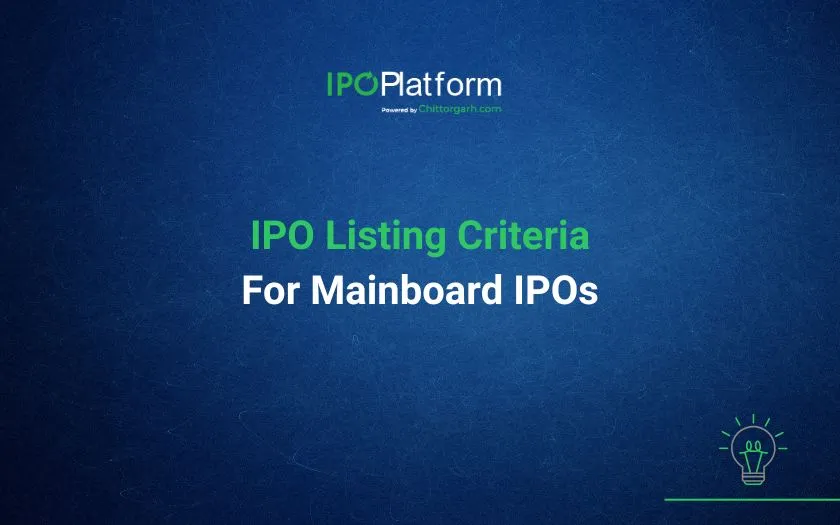How to be IPO Ready?

Being IPO-ready involves careful planning, compliance with regulatory requirements, and optimizing various aspects of the business. Going for an IPO requires a lot of readiness and preparedness.
Now a question arises as to Why Readiness and Preparedness is different?
To answer this, IPO Readiness is something that should be achieved if you have a vision to bring an IPO in the near future but certain aspects of the business need some modifications or in other words the company should make the necessary actions so that it can launch IPO in say next 1-2 years. On the other hand, IPO Preparedness is undergoing the process of IPO by complying with legalities and documentation as required. In a nutshell IPO Readiness is a preliminary requirement for moving towards preparedness.
Below are the factors which should be kept in mind to achieve IPO Readiness:
1. Strong Topline but Limited PAT
This is the most common scenario seen in the case of most SMEs. The companies usually focus on increasing the turnover mom (month on month basis) and they do have significant improvement in sales. But at the same time, profitability (PAT) loses focus. This might be due to higher marketing costs, commissions, distributor fee and sometimes tax optimization may also be a reason for this.
SMEs which have the vision to bring its IPO should understand that PAT plays a significant role in determining the valuations of the company which in turn decides the amount of funds that a company can raise through IPO.
A forward looking IPO company should shift its focus to bring improvements in PAT. Though there is no threshold for PAT but looking practically, PAT has to be around 3-4% to make it viable enough for IPO funding. It is to be noted here that though a company may be technically meeting the eligibility criteria but still it may not be viable to go for IPO.
A company can make improvements in its profitability by reducing the marketing costs, make an analysis of its cost factors and decide which of them can be curtailed (Article on how to increase profitability). Also companies adopt tax optimization to a greater extent that results in lower PAT in the books. If that’s the case, the company should do tax planning in the coming quarters which can result in a rise in PAT in the books.
2. Identifying the path to Growth
Companies often face a question about their next growth plan in the similar kind of business to take the company to a next level. This growth could be in the context of setting up of a subsidiary, setting up new plant or installation of new machinery or else. Identifying a path to growth is important because that is necessary to show the requirement/purpose of funds to be raised through IPO. The anchor investors, Pre IPO investors and retail investors as well get attracted to companies which have a growth plan for a couple of years. The SME should make a detailed project plan that shows capital outlay, the timing and volumes of projected annual revenues from the expansion and other details.
3. Litigations
If a Small and Medium enterprise has a vision of IPO in the near future, it should be kept in mind that there are no pending litigations by the company or against the company which may have any negative impact. All such litigations need to be resolved in a timely and judicious manner.
4. Related Party Transactions
Related party relationships are a normal feature of commerce and business. For example, entities frequently carry on parts of their activities through subsidiaries, joint ventures and associates. A related party relationship could have an effect on the profit or loss and financial position of an entity. Related parties may enter into transactions that unrelated parties would not.
For example, an entity that sells goods to its parent at cost might not sell on those terms to another customer. Also, transactions between related parties may not be made at the same amounts as between unrelated parties. Related-party transactions usually includes inter group sales, leases, service agreements like commission, and loan agreements like loan to directors, loan to companies. The nature of the transactions being related, they are matter of greater scrutiny from the investor community as these transactions may either inflate or deflate the profits or some of them may be ambiguous.
Hence though related party transactions are neither illegal nor they can be avoided fully but it’s of paramount importance that they are kept at an arm’s length.
A)Corporate Governance- Establish sound corporate governance practices, including a well-structured board of directors, independent board members, and effective committees. A company needs to develop and document corporate policies and procedures.
B)Appointing IPO Advisors- Appointing and assembling Right IPO Team is required to get on the track for IPO activities. A company keen for IPO can take services of IPO Advisors to guide them for IPO Readiness while the promoters can focus on the business.
C)Closing Thoughts- These are some of the factors that can be taken note of by the forward looking IPO companies and they can start moving towards each of the factors to achieve the milestone of listing for their company.






0 Comments